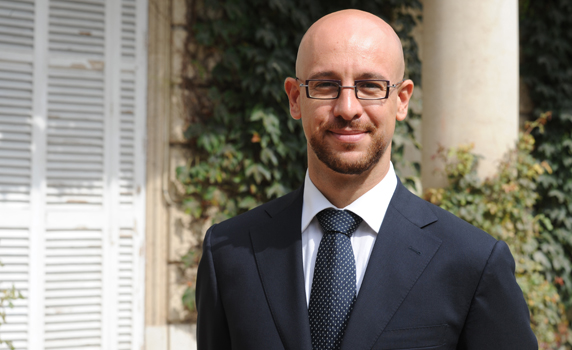
First it up to the personal philanthropy of individual entrepreneurs. Then corporate social responsibility reached corporations, and social and environmental sustainability started taking root in their products and processes. Now, going one step further, we are seeing the emergence of businesses that, from day one, are faced with a dual challenge: being profitable both economically and socially.
Bridging the gap between social enterprises (such as NGOs, foundations, and not-for-profits) and traditional companies (whose main objective is economic profitability) are the so-called hybrid corporations: organizations that successfully pursue social and economic goals. They are increasingly gaining in market share, and it is currently estimated that between 5 and 10% of people in Europe are working in the social economy.
This statistic was shared by Antonino Vaccaro, IESE Professor and Academic Director of the Center for Business in Society in the session titled, "Can you become a social innovator? Opportunities and trends in both profit and non-profit sectors.” According to Vaccaro, in recent decades we have seen a radical change in the ethical expectations of people with respect to the practices of companies. These organizations have responded to the demands of consumers by improving their practices and incorporating corporate social responsibility campaigns. However, there is still an "ethical gap" between the expectations of consumers and corporate practices that is now starting to be narrowed with the emergence of new models of organizations that go beyond rhetoric to effectively reconcile social and economic goals.
New actors in the social economy
Europe has nearly 11 million people working in the social economy sector. Along with NGOs and foundations are a growing number of social enterprises (such as La Fageda, which employs people with disabilities in the manufacturing of dairy products), cooperative organizations (like the Dutch bank Rabobank), and hybrid organizations or those with hybrid tendencies, either by their own volition (such as ice-cream maker Ben & Jerry's) or out of pressure from their own stakeholders (as in the case of General Electric).
It is a dynamic sector with great prospects for the future, added Vaccaro, one in which new competitive business models (like that of Samasource, an NGO that fights poverty in the world through a "microwork" platform) and new solutions to old social problems (such as, the Homeless World Cup), have a real impact on the economy and involve a change in traditional economic culture.
IESE supports social entrepreneurs
This is the underlying context for IESE's Social Entrepreneurship and Innovation Platform. It is a platform designed to give visibility and opportunities to people inside and outside the IESE community who are interested in social entrepreneurship. It’s an initiative of the CBS (Center for Business in Society) that starts with three basic objectives:
- to develop new educational and scientific initiatives in the realm of the social economy;
- to facilitate contacts between the IESE community and social entrepreneurs;
- and to provide direct assistance to those interested in launching new social enterprises.
Disismore: a labor network of disabled talent
During the presentation, there was an introduction to Disismore, the first project to be supported by the platform. Paolo de Fabritiis, founder and director of this budding social enterprise, explained that the idea came from the realization that there the talents of people with disabilities were not being fully utilized. In Spain there are approximately 1,260,000 people with disabilities, but only 460,000 (about 36%) play an active role in the labor market, meaning that they are either working or looking for a job.
Neither active job sites nor organizations devoted to the integration of persons with disabilities effectively cover all phases of the recruitment process. Based on a model of social recruiting, Disismore uses social networks to increase visibility and accessibility to the talents of people with disabilities. At present, the company is in the phase of recruiting users, and has already attracted more than 20 companies to sign up. Paolo de Fabritiis recognizes that "it will only work if we are able to demonstrate value for all those involved" (companies, people with disabilities and social organizations), and clearly knows that "a social enterprise competes in the marketplace.” In other words, if it can meet the dual challenge of achieving social profitability and economic profitability.
More information about the Social Entrepreneurship and Innovation Platform